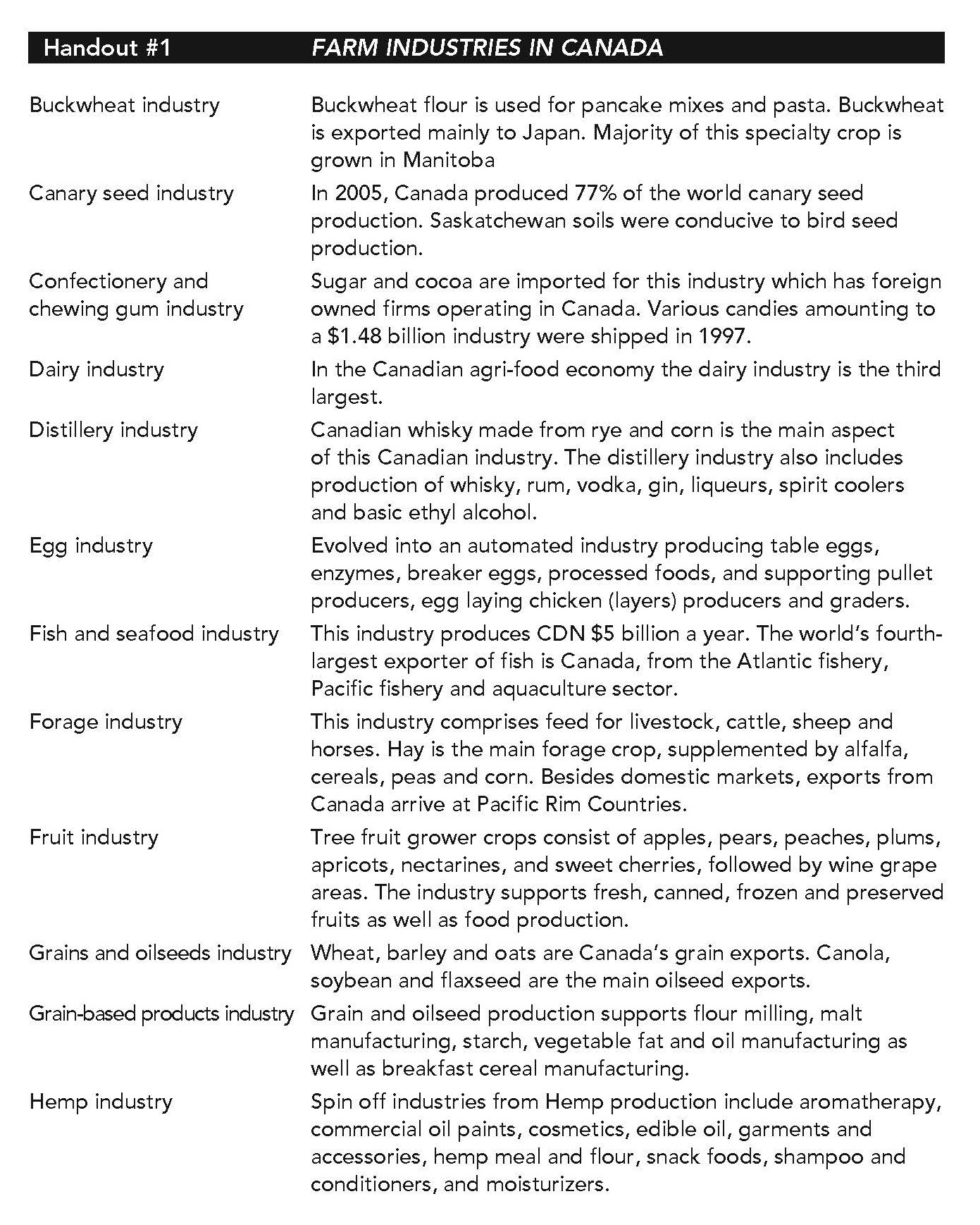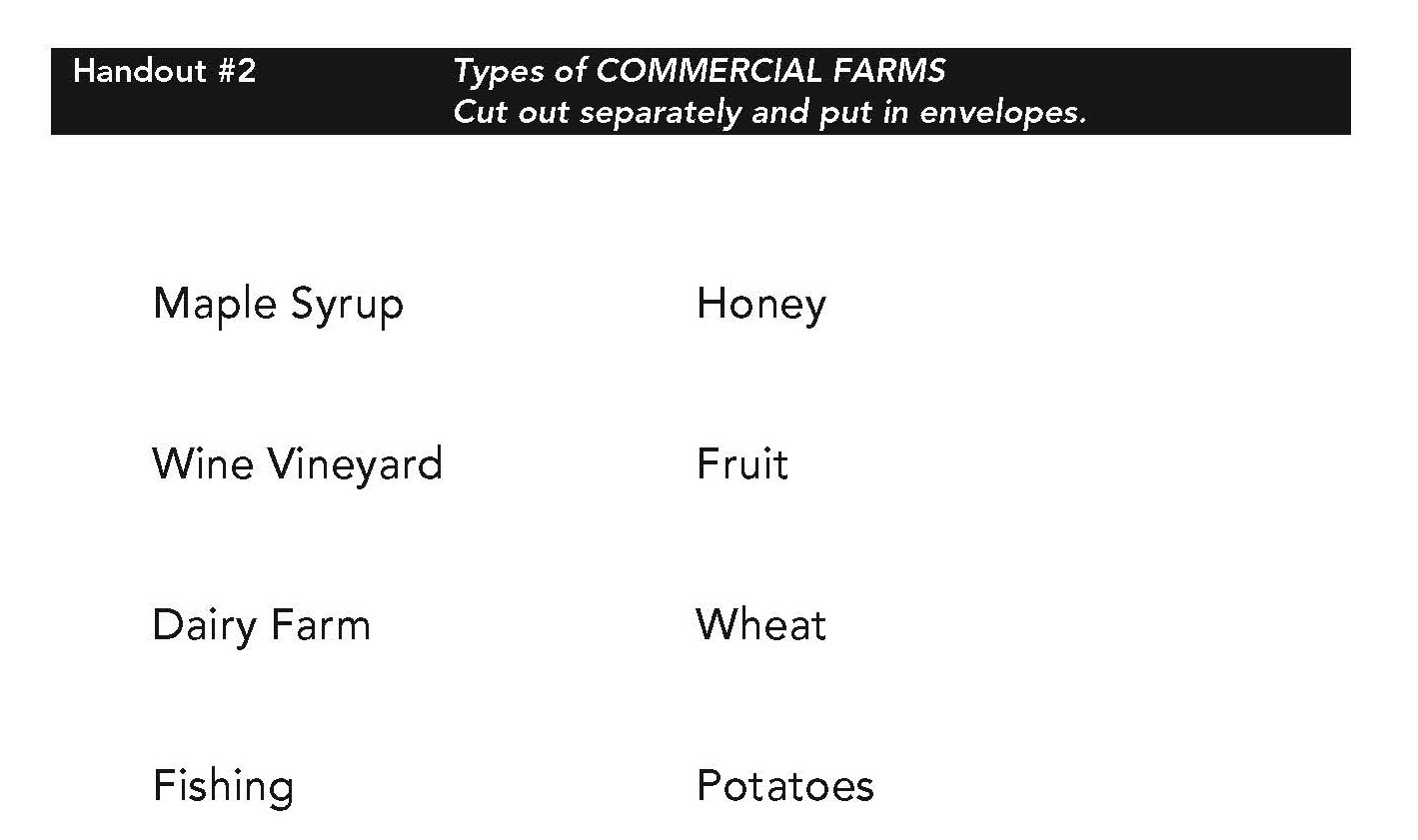Link to British Columbia Social Studies Curriculum:
- A3 – compile a body of information from a range of sources
- A5 – defend a position on a contemporary or historical issue
Links to the New Learning Standards:
- Use Social Studies inquiry processes and skills to: ask questions; gather, interpret, and analyze ideas; and communicate findings and decisions
- Assess the significance of people, places, events, and developments at particular times and places
Brief Overview of the Lesson:
Working in groups, the students will simulate the experience of establishing a farm in Canada as a way of learning about the factors that affect the pricing of commodities.
Estimated Time Required for Implementation:
one class period
Materials Needed:
Copies of handout(s), 6–8 small envelopes
Suggested Implementation Strategy:
- Before the class begins, make a copy of the “kinds of farms” handout, cut up the sections and put one kind of farm in each envelope.
- Ask the class to define “commercial agriculture” — a large-scale production of crops for sale, intended for widespread distribution to wholesalers or retail outlets.
- Divide the class into small groups.(6-8 per group)
- Ask the groups to brainstorm the kinds of commercial farms that exist in Canada and record their ideas. Have each group share its lists.
- Distribute a copy of Handout #1 to each group and ask them to read it.
- Tell the class that this is their lucky day! Each group has won the agriculture lottery and has been given the opportunity to start up a new industry somewhere in Canada.
- Give one envelope to each group and tell them to open it to see what kind of farm they have won.
- Working in the same groups, their task now is to think about all the factors to consider about where to locate their farm, make a wise decision and be prepared to explain why they made their choice.
- Take up their decisions and record the reasons for their choices on the board.
- The teacher may have to ask a few questions to get all these reasons such as location, climate, raw materials, market, labour, and transportation. Some sample questions are provided below if needed.
- Why would British Columbia and Quebec be a good place for a maple syrup
farm? (raw materials)
- Why would you want your fish plant in British Columbia Coast? (transportation)
- Why would a bread company build a food processing plant in a big city? (labour)
- Why did McCain foods choose to build in New Brunswick? (location)
- Why is the Okanagan Valley a good place to grow grapes? (climate)
- Tell them that these are the factors that affect where to put your industry.
- Ask, what are the factors that will decide the prices you will charge for your products?
- Ask, how can the consumer make sure they are getting the best prices for your goods?
- Some sample questions to start the discussion are as follows:
- Why does a bag of milk cost $4.29 at one city store, and $5.99 at another city store?
- Why does it cost more to buy a bag of peanuts at the grocery store than at a bulk food store?
- What can people do to make sure they are not paying more than necessary for their purchases? They could read food ads, compare prices, buy in bulk, stock up when there is a sale, plan meals ahead of time, and use stores that have a price matching policy, etc.
Evaluation:
• Assess the group decisions as to where they decided to build their new industry.
Options for Consideration:
- The students could choose which industry they want to build instead of the lottery envelopes, as long as a variety of industries are chosen.
Extended Learning Opportunities:
- Hand out copies of the “Number of Farms in Canada” (Handout #3) and ask the students to think about the factors that were discussed today, and write a paragraph explaining why some provinces have many more farms than others.









